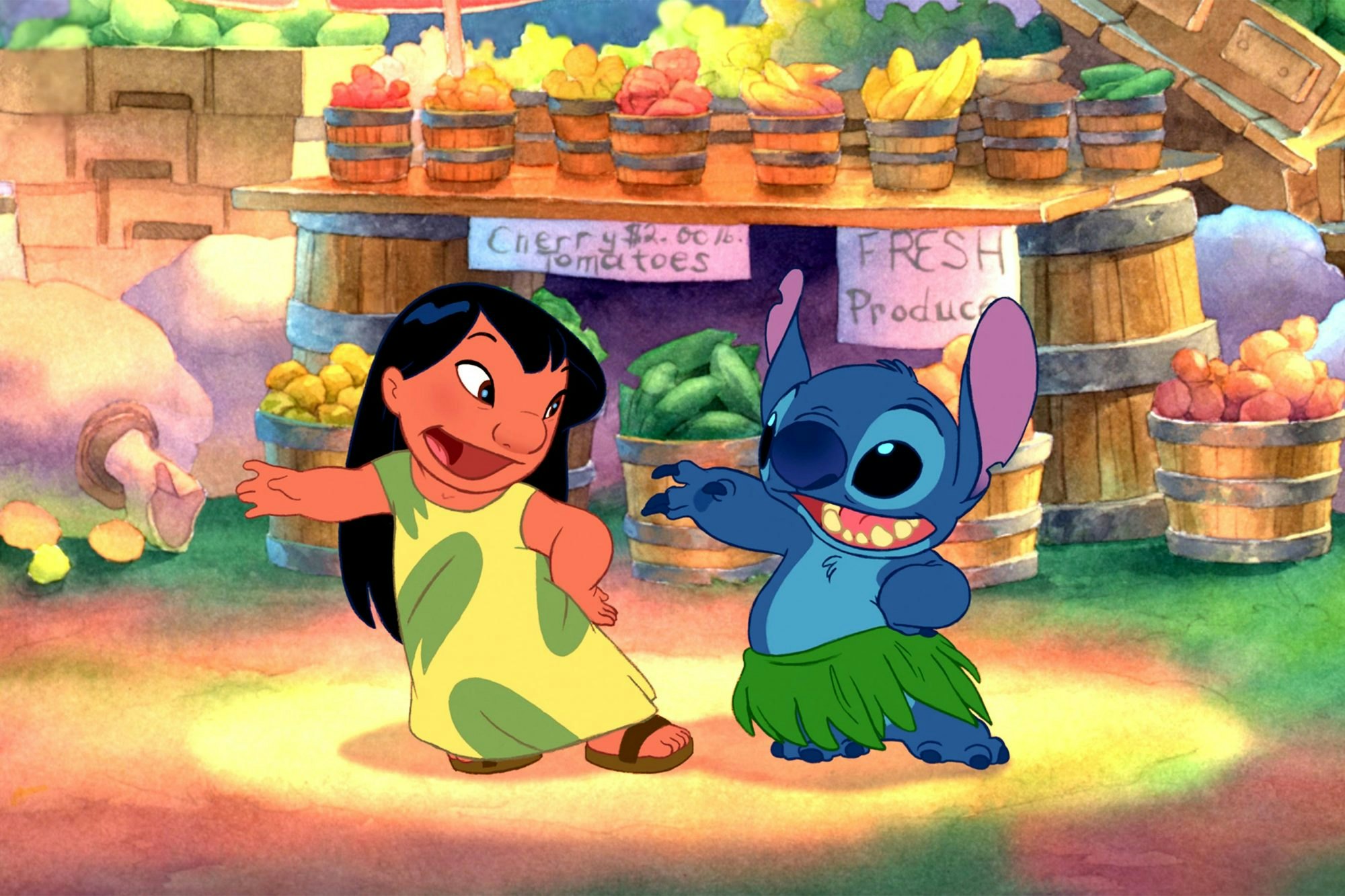
In the early 2000s, Disney deployed a unique marketing campaign to advertise its new film. In short teaser trailers, classic scenes from beloved Disney movies like Aladdin, The Little Mermaid, and The Lion King played as normal until a small blue alien entered the shots uninvited, upending the sequences.
I was about eight at the time — in other words, the target audience for these ads — and boy did they work. The Beauty and the Beast-themed trailer was included as a preview on one of my well-worn VHS tapes. In it, the movie’s theme plays as Belle and the Beast dance in the famous ballroom. But this time there’s a tiny blue monster crawling on the ceiling. He skitters over to the giant chandelier, causing it to crash down and nearly hit the protagonists. Belle huffs “Get your own movie,” and AC/DC’s “Back in Black” begins to play. I learned very little about Lilo & Stitch except that I needed to see it.
Turning 20 this month, Disney’s 42nd animated feature remains as joyous and chaotic as it was in 2002. Set both in outer space and Hawaii, the movie follows alien science experiment 626, nicknamed Stitch, after he crashes on Earth and forms an unlikely friendship with a girl named Lilo. Both are outcasts, Stitch an extraterrestrial fugitive programmed to destroy everything in his path, Lilo a sad, parentless little girl at risk of being taken away from her older sister and guardian, Nani, by Child Protective Services.
On paper, it feels like this film absolutely shouldn’t work. Co-writers and directors Dean DeBlois and Chris Sanders (who also voices Stitch) throw everything and more at the audience: Aliens, an Elvis-heavy soundtrack, airborne plasma cannon battles, an imposing FBI agent turned CPS officer named Mr. Bubbles. The movie also retains a strong sense of place, with Hawaiian language, music, and dance integral to Lilo & Stitch’s plot. The film was heavily researched, and many of the movie’s voice actors were Hawaiian and had freedom to change parts of the script to better reflect colloquialisms.
The film’s art style also marks a departure from Disney’s typical look. The backgrounds are watercolor, and the character designs are rounded and soft. Nani’s strong legs and pear-shaped figure are a refreshing change from the conventional Disney princess body.

Thematically, Lilo & Stitch is also more complex than many of its Disney contemporaries. The portrayal of Nani’s battle with Child Protective Services, for instance, isn’t glamorized or sugarcoated. The audience sees the dishes piled up in her sink. We watch Nani struggle to hold down a job, care for and be gentle with her sometimes bratty sister, and make time for herself. Lilo & Stitch does a good job of exploring how everyone in America is one accident away from poverty and how “pulling yourself up by your bootstraps” isn’t always enough.
The film further critiques authority figures, celebrates unconventional family structures, and examines the tourism industry on the Hawaiian Islands. Did I mention its irreverent sense of humor? While no one can accuse Lilo & Stitch of being boring, this movie has a lot going on. Yet it comes together seamlessly.
While many Disney films released before and after the Disney Renaissance (roughly 1989-1999) were marred by fraught circumstances and tense relationships behind the scenes, the opposite was true here, which no doubt contributed to the movie’s positive reception. As described in the documentary The Story Room: The Making of Lilo & Stitch, Sanders was approached by the studio to create a lower-budget movie that packed a creative punch, a strategy Disney had successfully employed with Dumbo.

In response, Sanders recycled a failed children’s book idea, which he pitched to Thomas Schumacher, then-president of Walt Disney Feature Animation, in a karaoke bar. Sanders soon brought in DeBlois, who he’d met while working on Mulan, to co-direct. But as DeBlois describes in the documentary, he had a stipulation: As Head of Story on Mulan, he had been “miserable” due to long hours and a longer-than-anticipated schedule. With Lilo & Stitch, he insisted that work would be completed only during the regular workweek. “We’re going to have lives,” DeBlois said. “None of us are going to lose our health in the process.”
The policy was upheld, and thus working on Lilo & Stitch was fun. In his off hours, Sanders learned to longboard. The crew went kayaking together on the weekends. The more relaxed, collegial atmosphere and the lack of oversight from Disney executives resulted in an environment ripe for creativity. With greater freedom and better working conditions, Sanders and DeBlois wrote one of Disney’s weirdest, boldest films, and one of its few successes in its stumbling post-Renaissance era.
Sanders and DeBlois’ “everything but the kitchen sink” strategy worked. The movie literally has it all, but most importantly, it has heart. Beneath its absurdity, Lilo & Stitch captures what it feels like to yearn for belonging and to struggle to be understood. 20 years on, it’s still one of the most creative and inclusive stories audiences have seen from Disney this millennium.







